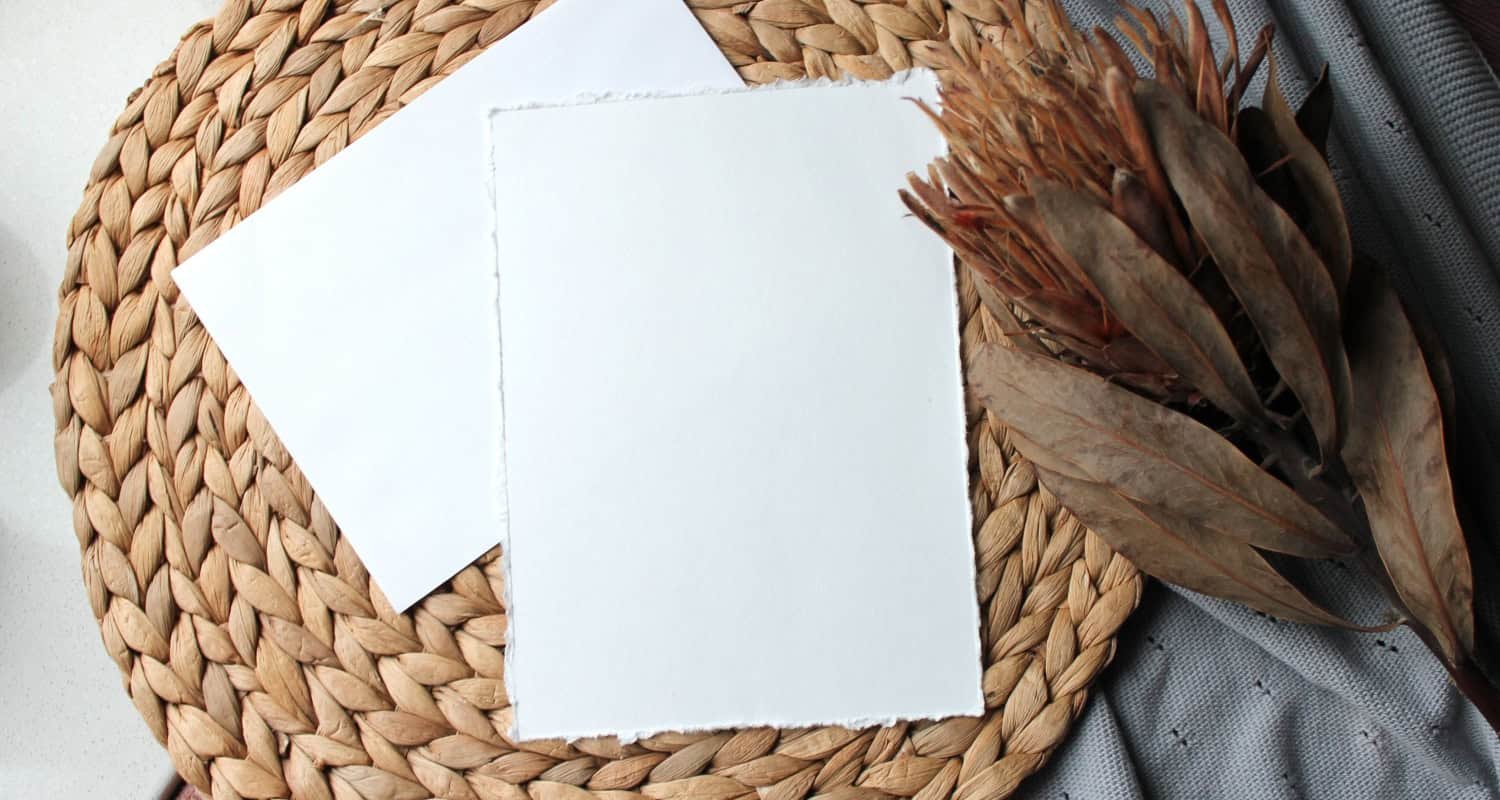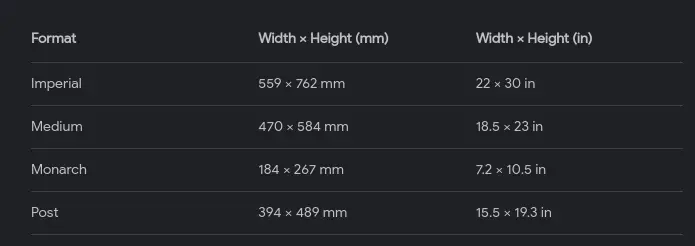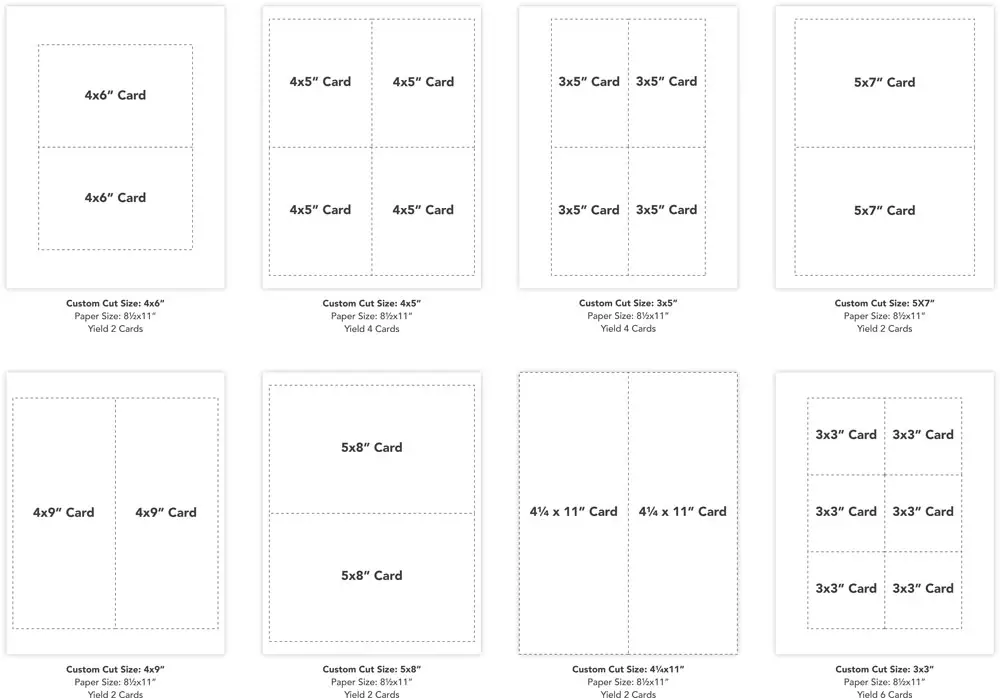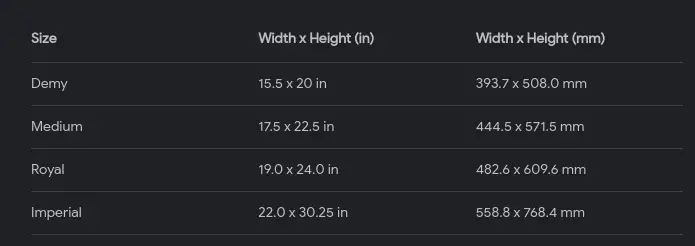Have you ever heard about Imperial Paper Sizes? Papers have been in use for centuries, but as we have earlier discussed, the International Standardization of Paper Sizes happened only 20-30 years ago. Before this International Standardization arrived, different countries used different Paper Size Standards within themselves according to their own needs. And these Standards too were pretty good, but the International Standardization was done to unify the countries and create one Standard that would be followed everywhere regardless of the place, time and culture in the country.
The UK and the neighbouring countries are the ones that put forward this idea of a Universal Standard for everything known as Metrication. Metrication was handled by the ISO (International Organization for Standardization).
Although, even after the ISO Standards were introduced, some regions in these countries locally continue to use their earlier Standards for their general purposes and it, of course, does no harm. Hence, it can be helpful to know the more previous Standards of some countries that are important to the world trade and business perspective. Therefore, today, we’re going to talk about British Imperial Paper Sizes used in the UK and other neighbouring countries. These are also the sizes that inspired the ISO 216 A Series Paper Sizes.
Table of Contents
About British Imperial Paper Sizes
The UK used British Imperial paper sizes before metrication, and most of that was promptly out-of-date for one ISO 216 A order paper size. Still, Foolscap Folio, to present its adequate allure name, usually used work writing paper hold more protracted to vanish. Foolscap was still in regular work use well into the intervening 1980s, and the name was usually, mistakenly, used to indicate A4 proportion paper. Today, Foolscap Folio Paper Size cannot be obtained from commercial office paper suppliers, but it can still be obtained from some specialist paper manufacturers like James Cropper plc and others, and is not handy from marketing writing materials stockists.
The ISO 216 standard, which involves the frequently used A4 proportion, is the worldwide standard for paper content. It is used across the globe except in North America and parts of Central and South America, placing North American paper sizes in the way that “Letter” and “Legal” are used. The worldwide standard for envelopes is the C order of ISO 269. Paper size guidelines guide the capacity of paper sheets for writing, letterhead, cards, and a few impressive documents.
There are some Imperial Paper Sizes which were so widely used that it took longer for the change to Metric Standards to occur. One of such sizes was the Foolscap Folio Size which remained in office use even after Metrication and was often wrongly referred to as the A4 Size.
Cut Writing Paper Sizes
The cut sizes are the ones that were actually used for writing and business purposes; were also the sizes of the books and paper after printing and trimming were done. These are the paper sizes that people see. The names of the sizes were as follows: Albert, Duchess, Duke, Foolscap Quarto, Foolscap Folio, Small Post Octavo, Small Post Quarto, Large Post Quarto, Large Post Octavo.
[table id=27 /]From Albert to Foolscap Folio, one finds the sizes in increasing order of dimensions with Albert (4.0 in × 6.0 in or 101.6 mm × 152.4 mm) being the smallest and Foolscap Folio (8.0 in × 13.0 in or 203.2 mm × 330.2 mm) being the largest. Of the other four sizes when placed in the increasing order of dimensions; Small Post Octavo (4.5 in × 7.0 in or 114.3 mm × 177.8 mm) is the smallest while Large Post Quarto (8.0 in × 10.0 in or 203.2 mm × 254.0 mm) is the largest. The aspect ratios of all the paper sizes are different; they vary between 1:1.23 and 1:1.625 which are quite close to the 1:√2 (1:1.414) aspect ratio.
So, it’s clearly visible from the above table that the aspect ratios of the imperial paper sizes are not constant according to ISO A and B series papers. You can find more detailed information about the difference between Foolscap and A4, Letter and legal paper sizes in our guide.
Meaning of Folio, Quarto and Octavo Paper Sizes
Folio, Quarto, and Octavo are terms that are used to refer to the number of folds; that is made when the uncut paper is folded after printing to bind into books; hence generally used for book printing. These terms individually do not refer to paper sizes, but when used in conjugation with other Size names; are very helpful in stating standard or related sizes to that size.
Folio, Quarto, and Octavo are all cut paper sizes and are technically wrong if used independently. For instance, you can visualize the term sheet of paper – this keep, and mainly does, concern Foolscap Folio; nevertheless, it keeps mentioning Small Post folio. This results from the conditions covering published documents and work that outline the number of folds used when the uncensored paper is being encased publication for binding into books afterward.
Although a few Folio, Quarto, and Octavo sizes were convenient as loose-cut paper (like Foolscap Folio), most only came in use in book publication. Likewise, a few even less average folds, sexto, duodecimo, and sextodecimo were particularly used in book results.
[table id=28 /]For a sheet of printed paper, Folio means folding once giving rise to two leaves (4 pages) of a book; Quarto means folding twice giving rise to four leaves (8 pages) of a book; Octavo means folding thrice giving rise to four leaves (16 pages) of a book. As some of these Folio, Quarto and Octavo Sizes were extremely convenient to set as Paper Sizes; they were available as loose cut paper (e.g., Foolscap Folio).
Uncut Writing Paper Sizes
The Uncut Imperial Paper Sizes are generally used for printing and related purposes, not for common use. The Size names are as follows: Pott, Double Pott, Foolscap, Double Foolscap, Foolscap and Third, Foolscap and Half, Pinched Post, Post, Double Post, Large Post, Double Large Post, Copy, and Medium.
[table id=29 /]The smallest size out of these is the Pott at 12.5 in × 15.0 in or 317.5 mm × 381.0 mm while the largest size is the Double Large Post at 20.75 in × 33.0 in or 527.1 mm × 838.2 mm. The aspect ratios vary between 1:1.2 and 1:1.87. The size of Foolscap Paper is 13.25 in × 16.5 in or 336.6 mm × 419.1 mm; this is later cut into the smaller Foolscap Folio Size which was the most widely used size.
See Also: –
- British Imperial printing paper and drawing paper sizes
- Imperial Reams & Quires – Units of Paper Quantity
FAQ
What are imperial paper sizes?
A piece of Imperial Paper is also known as Full Imperial. Full Imperial is 30×22 inches (nearly 76x56cm) Half Imperial is 15×22 inches (nearly 56x38cm) Quarter Imperial is 15×11 inches (nearly 38x28cm)
Is Half Imperial A3?
Half imperial size is 457mm x 609mm (18” x 24”), appropriate for A3.
Does UK Use Letter or A4?
In the UK and differing additional parts of the realm, we use the A4 paper intensity, aligning 8.27” by 11.7”. It would help if you became aware of US Letter vs. the UK A4 measure.
What are British paper sizes?
The most prevalent and recognized piece of A4 paper capacity is 210 x 297 mm. It was used throughout the whole of the UK. This is used for joint publication from Word documents to writing materials letterheads.
See Also: Japanese Paper Sizes – JIS A, JIS B & Traditional Paper Sizes
Final Words
This is all the information that we had about Imperial Paper Sizes. Please feel free to let us know your thoughts and suggestions in the comments below. Go over our other articles if you liked this one and found it useful.




